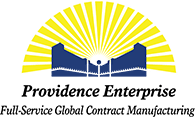
The labor crisis
Less than a year into the pandemic, the healthcare industry had lost nearly a third of its workers (18% quit, another 12% were laid off). A further 20% had thought about leaving and nearly all said they were affected by staff shortages. This was devastating to an industry that was already struggling to keep positions filled (Prior to COVID-19, the number of doctors required to meet health care needs in the US was short by 20,000).
Now, while it is hoped that the worst of the public health crisis is behind us, a dearth of medical professionals continues to be a serious problem expected to get worse. An aging population puts a double strain on healthcare providers. First, because older generations require more healthcare than young ones. Second, the upper tier of most experienced practitioners are preparing to retire. Nearly half of all registered nurses are over 50 years old. Three years from now, one in five physicians will be 65 years old or older.
Time machines
A faster drill will not compensate for dental staff shortages. But how about a device that cuts down on unnecessary visits? Seeing one’s dentist every six month is a rule of thumb. Some people may need to come in less frequently while a handful would benefit from an earlier check-up. So, what if you produced a device that scheduled appointments for patients when, and only when, necessary?
What would this look like? For dentists, it might be a take-home device that fits into a patient’s mouth and takes images of the wearer’s teeth and gums. These images would automatically transmit (via phone app) to the dentist. If all looks well, the dentist may suggest an appointment a few more months down the road. If the patient does need to keep their six-month appointment, they sit down to a dentist who already knows – based on the received images – what must be done.
Such devices effectively create time, giving dentists extra days or weeks which can be spent seeing more patients. Similar wearable devices could be used by physiotherapy teams to ensure patients are doing their exercises correctly or to monitor recovery of a post-op patient.
All hands on tech
The technologies that drive innovative, time-saving devices are here and becoming smarter by the day. Automated programs are cutting down on administrative busywork. Their effectiveness is measured by how much the cut down on manual input. Updating a patient’s records with a scan and two keyboard clicks rather than typing into forms saves hours in a weeks, days in a month.
Wearable devices monitor patient health – round the clock if necessary – alerting the patient, nurse or emergency services when intervention is required. Cloud-based programs keep patient data secure while accessible on any connected device. Artificial intelligence (AI) learns to understand what specific patients need at any given time and acts accordingly. Light therapy boxes help prevent illnesses that result from sleeplessness and fatigue.
In the face of growing labor shortages, medical devices that ‘triage’ patients based on urgency keep healthy people out of waiting rooms (and people healthier so they don’t need to come in) and bump serious cases to the front of the line.
A medical manufacturer’s hypocritic oath
Not all improvements rely on cutting edge technology. “First, do no harm” – a familiar (though loose) translation of a 2000-year-old ethical mandate – applies to medical devices as well as physicians. The last thing overwhelmed practitioners need are devices that slow them down.
You can do better by doing an efficiency check on each device:
How many steps does it take before your device can begin to do its job?
How easy or difficult is it to remove the device from its packaging?
Does it need to be assembled before use?
If so, how easy are the steps or how clear the instructions?
If it’s an internet of medical things device, do you have to download apps or other software to phones or computers?
Does it need to be charged before it can be used?
If so, for how many hours?
Once it is ready to use, how easy is it to operate?
Have you designed an ergonomic device making it comfortable to hold or wear?
Is it operationally intuitive or does the user need detailed instructions before using it?
Would you like a copy of this post to share?
Other Featured Resources
About Providence Enterprise
Providence Enterprise is a Hong Kong contract manufacturer with manufacturing in China, Vietnam, and Mexico. We specialize in electronics, electro-mechanical assemblies, and high-volume disposables. We are FDA registered and ISO 13485, ISO 14971, ISO 14001, ISO 27001, IATF 16949, and ISO 45001 certified. Our capabilities include fabricating tooling for silicone rubber and injection molded plastics, clean room injection molding, electronics, clean room assembly, and sterilization.
















































